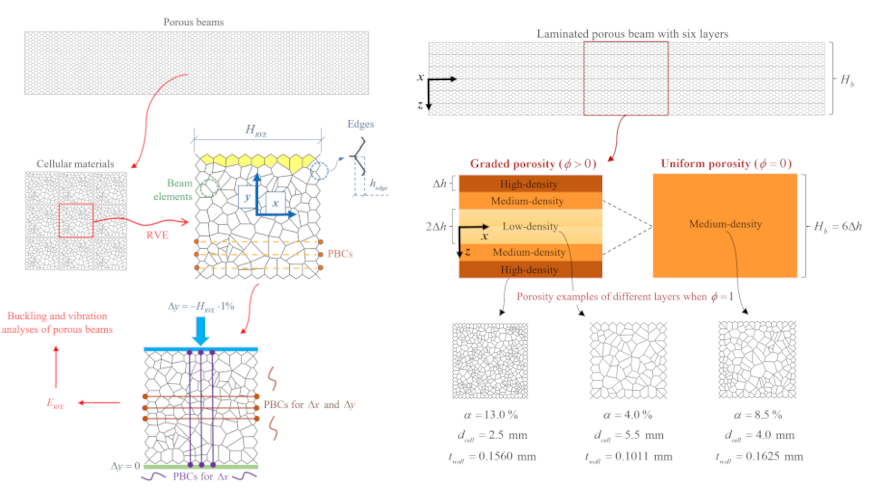Multiscale modelling of functionally graded porous beams: Buckling and vibration analyses
New Publication in “Engineering Structures”
2022/07/08

Authors: Da Chen, Shahed Rezaei, Philipp L. Rosendahl, Bai-Xiang Xu and Jens Schneider
This paper combines the finite element (FE) homogenisation and structural assessments to conduct the multiscale modelling of laminated functionally graded (FG) porous beams made of closed-cell foams, with a focus on the beam buckling and vibration performances. In the FE homogenisation, representative volume elements (RVEs) are built up according to the relative densities, average cell sizes, and base material properties from foam samples. They are used to predict the foam Young’s modulus and verified against existing studies. A detailed investigation is then carried out to disclose the effects of RVE and porosity features, where the relative density is confirmed as the dominating factor in the calculation of foam modulus. Quantitative relations between pore structure and Young’s modulus are obtained via data fitting.
In the subsequent structural assessment, the predicted Young’s modulus is employed in the buckling and vibration analyses of FG porous beams, which are constructed by a six-layer laminated beam model and consist of high-, medium-, and low-density layers with varying designated relative densities. The Timoshenko beam theory and the Ritz method are applied to derive and solve the governing equations. Convergence and validation studies are performed accordingly to ensure the validity of presented results, followed by a parametric study to examine various FG beams concerning different porosity distributions, boundary conditions, and slenderness ratios. The prominence of graded porosities is evidenced by apparently promoted beam stiffness with over 30% and 10% increments in the critical buckling load and fundamental natural frequency, respectively. The graded porosities can be linked to realistic closed-cell Aluminium foams with developed quantitative relations, shedding important and practical guidance into the porous structural design.



